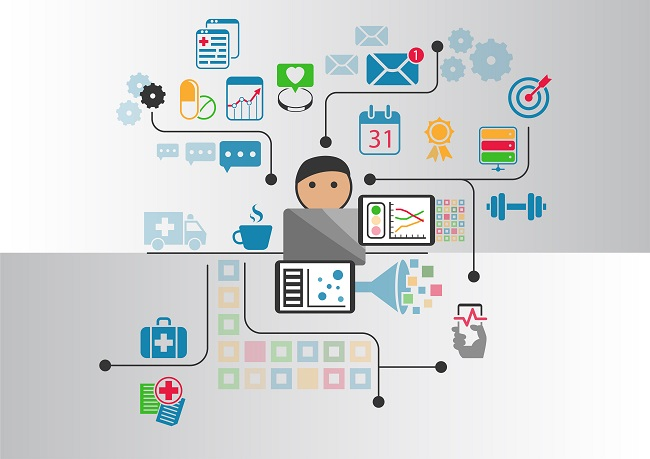Theme – 8
1. Digital Transformation of my previous working place
Overview:-
The case study delves into the digital transformation journey of a the
no.1 Insurance Company in Sri Lanka. Rated AA+. The company operates as two
separate conglomerates primarily focusing on life and General insurance. It
underscores the adoption of cutting-edge technologies across various functions,
including management tools such as the Management Information System (MIS), SAP
for accounting, and the Enterprise Resource Planning (ERP) system for
administration and HR.
Key Technologies Used in Operations
- Integration of ERP System for
operations: - From attendance
tracking to resignation processes, the company operates entirely through
an ERP system, eliminating the need for paper-based operations. This
enhances efficiency and streamlines HR processes.
- Utilization of SAP for Accounting:
- The company employs SAP for
accounting, seamlessly integrated with the payment system. This ensures
accuracy and efficiency in financial operations.
- Digital Board Meeting: - Board meetings are conducted
online using tablets provided to directors. Documents are uploaded online,
and decisions are disseminated through the company's intranet. This
facilitates efficient communication and decision-making, particularly
beneficial for a geographically dispersed network of branches.
Communication Strategy
- Intranet/email s primary communication channel: -
Email/Intranet serves as the primary mode of communication for employees,
including office assistants.
- Digital Notice Boards: - Internal communication
is facilitated through the company's intranet, managed by the IT
department. Digital Notice boards are displayed utilized for specific
announcements within the head office premises.
- Social Media during Pandemic :- Amid the COVID-19
pandemic, social media, particularly WhatsApp groups, played a crucial
role in communication and operational continuity. Digital channels were
instrumental in facilitating insurance claim processes and maintaining
seamless operations.
Impact of Social Media
- Enhance Communication through
social media: -
Social media accelerates the flow of information, enabling remote
collaboration and faster decision-making. This results in increased
efficiency and improved service standards.
- Organizational Culture Fit:-The incorporation of social media
has transformed the organizational culture, enabling faster communication
and decision-making. However, challenges such as productivity loss due to uncontrolled
social media usage during office hours have been addressed through
restrictions.
Risk Management Impact
- Balancing Human Aspects and Technological
Intervention
There is a risk of losing the human touch during technological interventions,
particularly in customer interactions. Incorrect information input may also
impact the accuracy of outcomes, affecting profitability.
Conclusion: - The
case study highlights the significant impact of digital transformation,
particularly the integration of ERP systems and social media, on the operations
and culture of an insurance company. While these technologies enhance
efficiency and communication, they also present challenges that require
proactive risk management strategies. Overall, embracing digitalization is
essential for staying competitive and meeting evolving customer needs in the
insurance industry.
Link:-
https://doi.org/10.1016/j.sbspro.2014.08.192
https://www.sciencedirect.com/science/article/pii/S1877042814048769
2. Social Media and
Organizational Communication
The following scholar
article of social media and Communication - by Marius Badea in 2014 is closely
matching with the strategic alignment on how social media influence the
communication in an organization and how does it strategically could be
managed.
The
article further elaborates whether all companies should use social media and if
proactive strategies are necessary for utilizing these platforms depends on
various factors as specified below with the breakdown drawn from considerations
and conclusions.
Target Audience: - It clearly states that it is important to the companies should
assess whether their target audience is active on social media platforms.
(e.g., rural aging population), investing heavily in social media might not be
effective for product promotion.
Strategic Alignment:- Botezatu suggests that companies should adopt a
proactive social media strategy only if it helps fulfill a strategic goal. The
strategy should align with the broader company objectives and communication
strategy.
Collaborative Strategy Implementation: - Social media strategy development can involve
various departments, including marketing, sales, and communication. However,
it's recommended to have a mix of professionals from the communication
department and possibly external communication agencies for new companies.
Management Involvement:- Top management should be involved in overseeing
social media strategy implementation and monitoring results. Social media
channels are not just communication tools but also avenues for customer
engagement.
Performance Matrix:- Key performance indicators (KPIs) for social media
should be set based on communication and business goals. These metrics can
include both qualitative indicators like community involvement and quantitative
indicators like the number of followers and interaction rates.
Resource Allocation: - While the physical costs of implementing social
media may be lower, human resource costs can be significant. Professional
involvement is necessary for achieving desired results, and costs depend on
communication objectives and activities.
Steps for online communication: -Online communication strategy, including setting
short-term, medium-term, and long-term goals, selecting appropriate
communication channels, establishing work policies, creating an editorial plan,
implementing strategies, and continuously monitoring performance
Internal Organizational Benefits:- Social media can contribute to various internal
organizational dimensions, including improving communication processes,
community development, facilitating information flow, promoting values,
consolidating organizational culture, and stimulating creativity and collective
intelligence under optimal conditions.
In
summary, while social media adoption and proactive strategies are not
universally applicable to all companies, their implementation should be based
on careful consideration of target audience, strategic alignment, collaborative
strategy building, management involvement, performance metrics, resource
allocation, and internal organizational benefits.















.jpg)


.jpeg)



